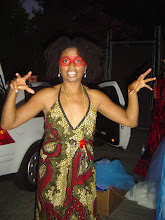Some of you may have heard about MOCA in Los Angeles commissioining the Italian street artist Blu to create a mural, then white washing it (literally) for its anti-war, anti-capitalist message. Well, check out the reasoning of the new director of MOCA, Jeffrey Deitch, for his decision, a decision which many are comparing to the removal of the Wojnarowicz video from "Hide/Seek" at the National Portrait Gallery:
"Look at my gallery website — I have supported protest art more than just about any other mainstream gallery in the country," he added. "But as a steward of a public institution, I have to balance a different set of priorities — standing up for artists and also considering the sensitivities of the community."
In the LA Culture Monster interview, Deitch goes on to say that, "there were zero complaints" because he "took care of it right away." Now there are LOTS of complaints because he took care of it right away. Was this a preemptive strike to prove that MOCA merits continued public funding or was it a pure curatorial call?
The removal of this mural was a missed opportunity to have MOCA generate a series of collaborations/actions around the work to discuss the place of the veteran in society. Vic Marks could have performed her latest work, VETERANS, right in front of it with actual veterans. Aimee Allison and Aaron Glantz, former KPFA Morning Show hosts, could have brought their series Winter Soldier 2008 Eyewitness Accounts of the Occupations for a live public reading. I am sure Cornerstone Theater could have made elegant use of such an incredible back drop, not to mention veteran groups themselves having speak outs of various political stripes. The community would likely have benefited from engaging this mural as a catalyst for dialogue.
This all begs the question, are artists not considered part of "the community?"



No comments:
Post a Comment